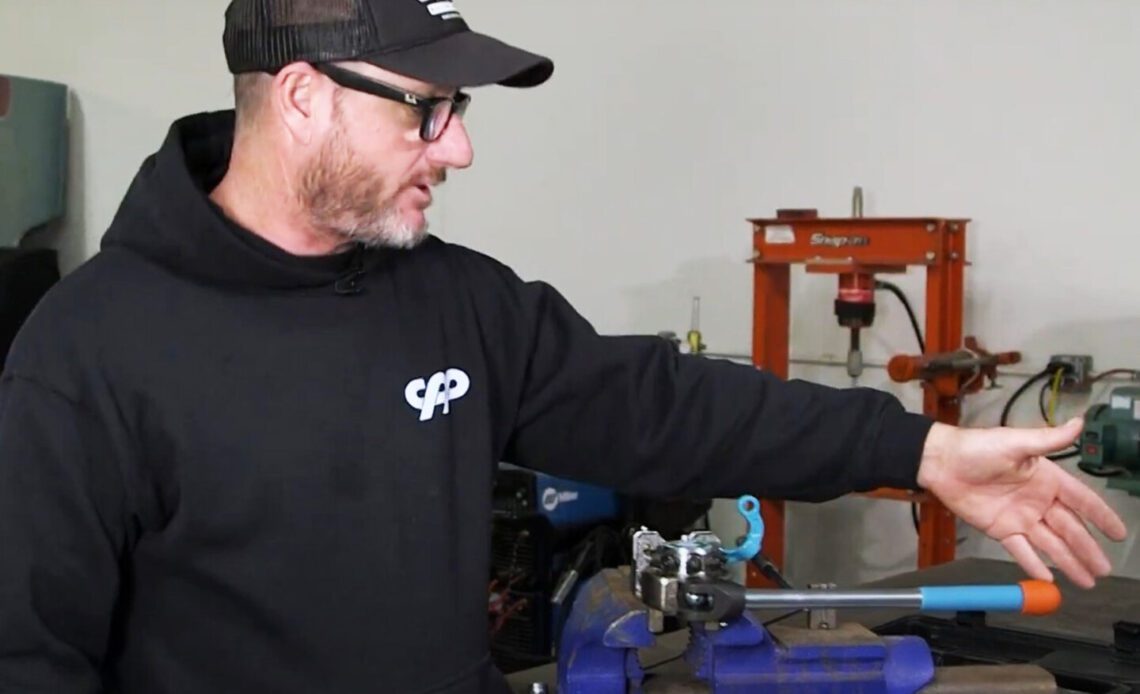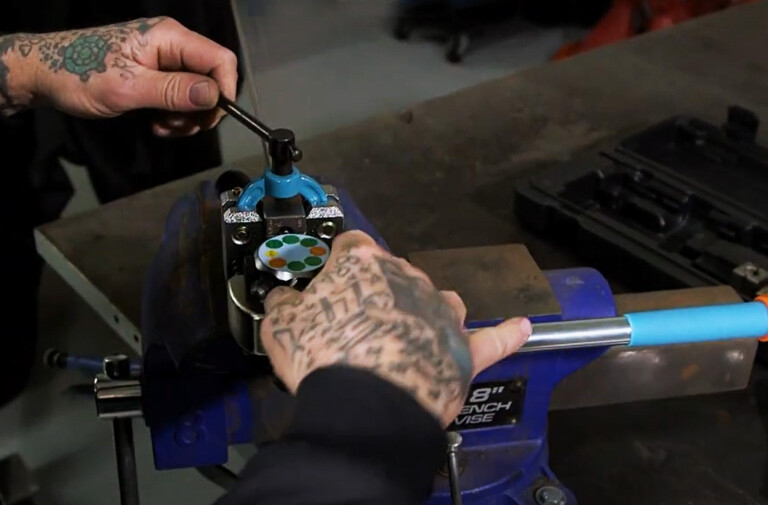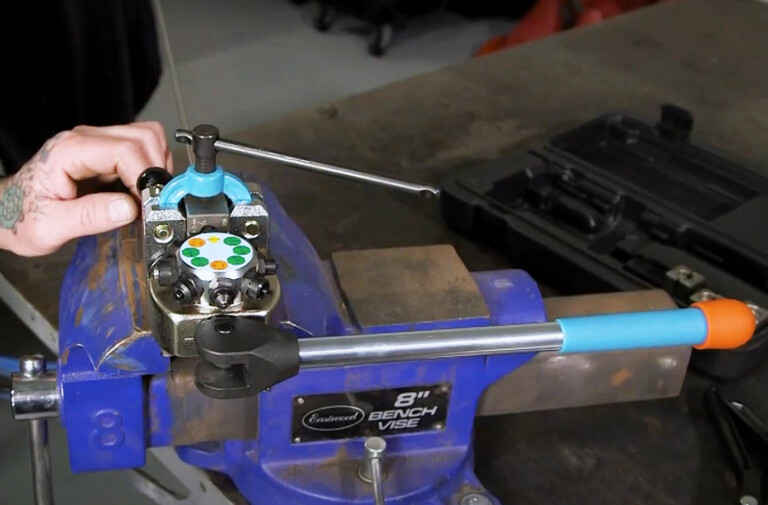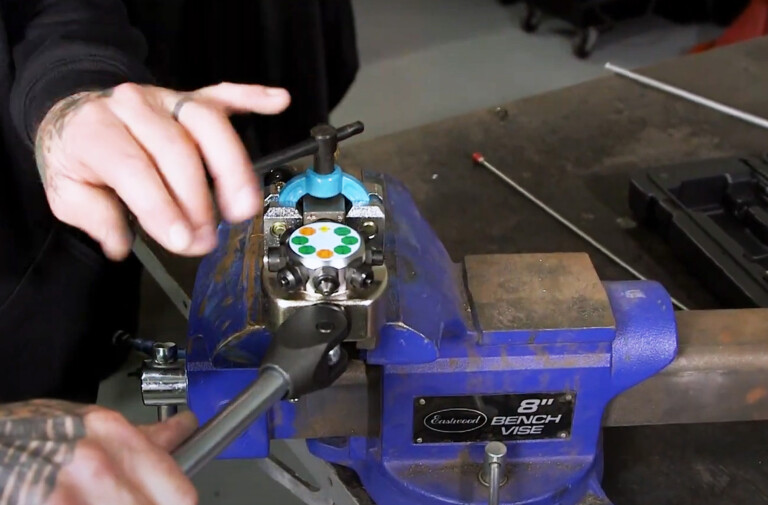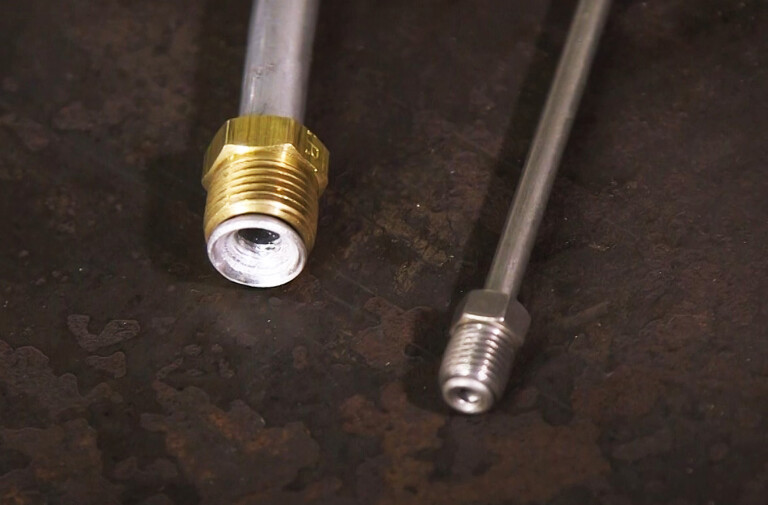Overhauling or creating an entirely new braking system for your race car or hot rod project can be a daunting task of angles, bends, and precise fitment. Your new overall brake system consists of individual brake lines that must offer leak-free fitment at each tubing flare.
Jason Scudellari, the lead for R&D at Classic Performance Products (CPP), shows off this double brake flaring unit that easily and quickly performs flawless flares.
“This unit is ideal if you’re doing a frame-off build or you’re doing your brake lines outside your car,” says Scudellari. “This CPP kit can create 45-degree single or double flares for 3/16-, 1/4-, 5/16-, and 3/8-inch, which covers your brake, transmission cooler, and fuel line needs.”
Scudellari walks us though the process of creating the flared end on a 3/16-inch brake line.
“The entire brake flaring tool mounts in your vise. We install the split clamping dies around the tubing and use the quick clamp to retain the dies. These dies are individually sized for each diameter tube. The first step we’ll do with the first turret heads is lightly snug the clamp and set the tubing depth where it needs to be. Then we clamp tightly.”
There is a turret-style head that rotates to each die. This matches the individual split tube retaining dies that affix around the tubing with a quick-release T-handle clamp.
“We then rotate the turret to the next flare step, compress with the large clamping handle, then rotate the turret to the final stage,” Scudellari explains. “And with that last clamp, we just created a perfect double flare in a matter of seconds.”
With the three step dial and clamping process, you just set the depth, create the initial flare, and create a second double flare. Then, you have the highest quality end result.
We then moved to a fuel line, where Scudellari repeated the same process with the matched 3/8-inch retaining dies for that tubing. “I like using a fine file to ensure everything is clean and square before flaring.”
“I have shown you the nice-looking flares produced,” Scudellari adds. “When the flare nut slides against the flare, you appreciate the accuracy. If you build some lines within a car, many CPP-quality hand-held tools also work well in tight places.”
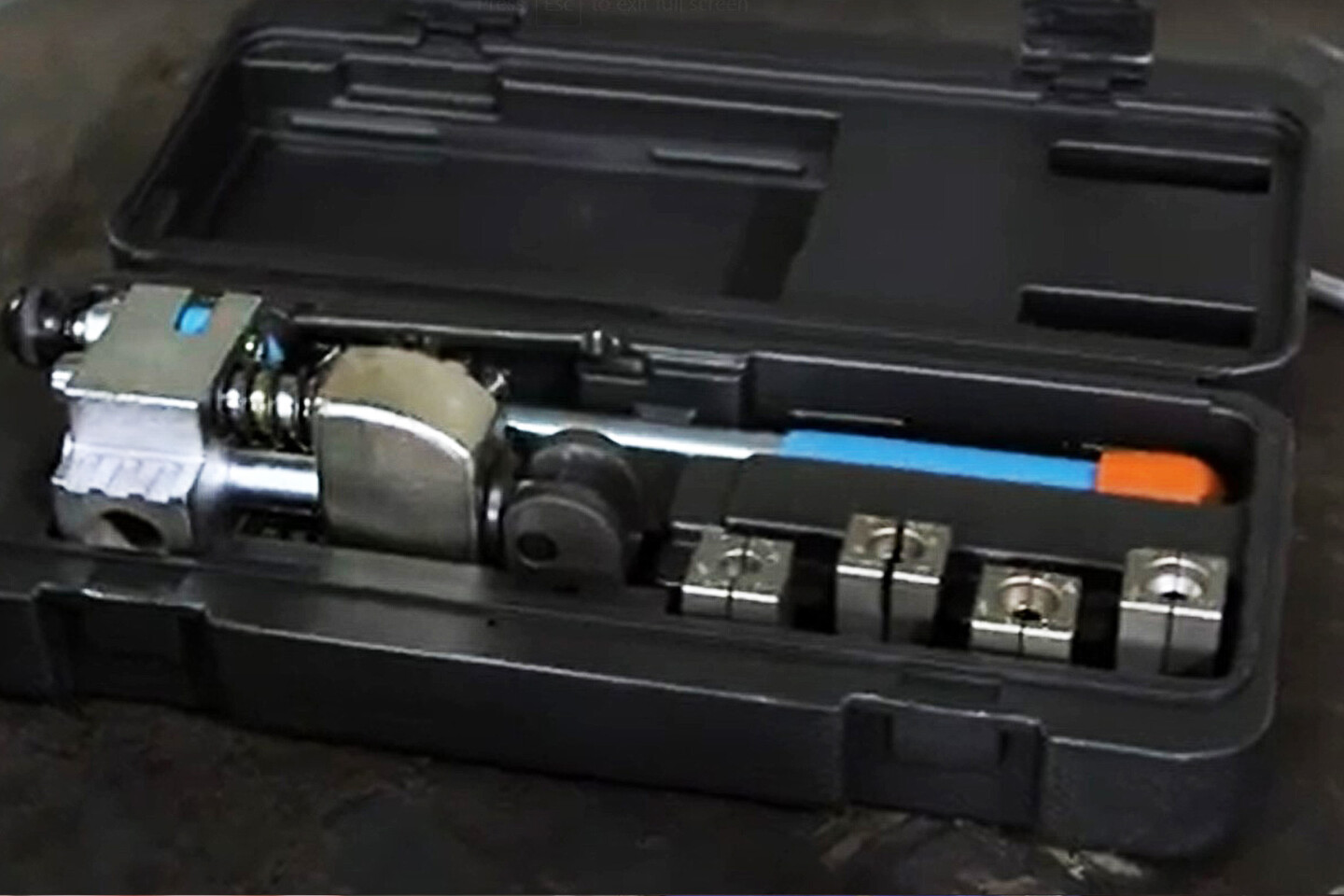
One of Scudellari’s favorite details is that the kit comes with a formed storage case to keep all of the components organized.
A good flare prevents the many opportunities for a leaking brake system at every…
Click Here to Read the Full Original Article at DragzineDragzine…

